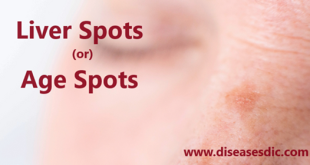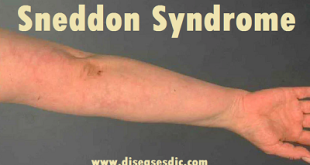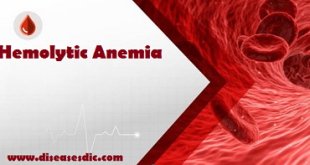Definition
Leukocytosis is the condition in which the body has a higher level (more than 11,000 leukocytes per cubic mm of adult human blood) of white blood cells (WBC) than normal level. White blood cells play an important role in the body immune system. White blood cells will function as a defense mechanism in the body against foreign bodies such as bacteria or viruses. The WBC counts increased due to the reaction in the bone marrow to infection or inflammation. Some of the bacterial and viral infections can cause leukocytosis. It also caused by asthma and allergies.
WBC counts in leukocytosis affected blood
Types
There are five types of leukocytosis:
- Neutrophilia
- Monocytosis
- Basophilia
- Eosinophilia
- Lymphocytosis
Leucocytosis can be subclassified as below:
Neutrophilia: Increased level of neutrophils.
Monocytosis: Monocytes count is elevated.
Basophilia: Basophils count is elevated.
Eosinophilia: Eosinophils count is elevated.
Lymphocytosis: Lymphocytes count is elevated.
Epidemiology
Mortality/Morbidity
Clinically critical morbidity and mortality are much of the time seen in patients with leukemic hyperleukocytosis. Hyperleukocytosis may bring tumor lysis disorder and disseminated intravascular coagulopathy.
The notable inconveniences (eg, intense respiratory failure, pulmonary hemorrhage, CNS dead tissue, hemorrhage), splenic infarction, myocardial ischemia, a renal failure because of renal vessel leukostasis, and priapism have been accounted for.
An examination by Canaani et al showed that in patients with recently analyzed intense myeloid leukemia who are being treated with allogeneic undeveloped cell transplantation, the presence of hyperleukocytosis is autonomously connected to an expanded frequency of backsliding, diminished without leukemia survival, and diminished general survival.
An investigation by Martinelli et al demonstrated that in patients with chronic lymphocytic leukemia, sickness stage and the presence of lymphocytosis foresee a shorter time to first treatment.
Age
Age is to be remembered for total WBC counts, neutrophil, and lymphocyte counts. The total WBC and neutrophil counts in neonates younger than 1 week were higher than the older children and adults. The proportion of lymphocytes and absolute lymphocyte count in children younger than 6 years are higher than those in adults. Infants have small storage pools of neutrophils. In some case of severe infections, it demands much neutrophil more than their supply. Therefore, infants may have neutropenia due to severe infections.
Risk factors
Risk factors that may cause leucocytosis such as follows:
- Bone marrow problems such as leukemia and thrombocytopenia
- Infections, inflammation, or tissue damage
- Immune reactions, such as during an allergy attack or asthma
- Medicines used to treat inflammation, mental health disorders, cancer, or breathing problems
- Physical or emotional stress
Causes
Infection: Generally, if the white blood cell counts are high in the body, it means the body is fighting infection. Infections can be caused by bacteria, viruses or parasites. Examples such as bladder infections, sinusitis, tuberculosis, chicken pox, and pneumonia.
Immune reactions: Immune system reacts strongly when you have the allergy or asthma attack.
Tissue damage: If you have damage to your tissues due to burns, heart diseases, and cancer. This causes elevated white blood cell count.
Inflammation: It is also caused by rheumatoid or regular arthritis, an inflammation of your joints. You can get some of the symptoms such as swelling, redness or feel pain in some part of your body.
The problem in bone marrow: When you have leukemia, thrombocytopenia, myelofibrosis, etc. will cause the bone marrow to produce increased levels of white blood cells.
Medicines: Some medications may cause leucocytosis due to adverse reactions will cause increased white blood cells productions. Medicines that are used for breathing problems, inflammation, cancer and mental health problems. Some of the medicines that are used such as corticosteroids, aspirin, anti-seizure, lithium, chloroform, etc.
Stress: physical and mental stress may also cause leucocytosis.
Urinary: White blood cells may increase in urine due to infections in the urinary tract, such as bladder or kidney infection or the formation of kidney stones or other bladder obstruction.
Pregnancy: It is also a common cause for the increase of white blood cells.
Medical conditions: Various medical conditions include tuberculosis, pneumonia, whooping cough, and measles can cause leucocytosis.
Symptoms of leukocytosis
There are no signs and symptoms associated with leukocytosis but when some of these following symptoms arise seek immediate medical attention.
- Continues fever
- Breathing trouble
- Problem in vision
- Bruising and bleeding
Bruising
- Heavy bleeding during menstruation in women
- Feeling weak, sick, and tried to a great extent that it may be very challenging to do the daily normal work.
- Problem in thinking and taking decision
- Unexpected weight loss
- Enormous sweating
- Poor appetite
- Feeling giddy constantly and dizzy
- Pain or tingling in the upper and lower extremities
- Enlargement of liver, spleen, and lymph node. These conditions are indications of bone marrow disorders such as leukemia and myelofibrosis.
Complications of leukocytosis
- If the leukocytes count >100,000 cells/mm3 lead to fatalities.
- When the WBC exceeds 100,000/µL, clumps of them block blood flow, which can lead to ischemic problems such as heart attack and stroke.
- Local tissue damage because of cytokines and toxins released by the leukemic cells.
- Cerebral infarction and respiratory compromise due to adherence of immature, malignant leukemic cells on the microvasculature endothelium in the brain and lungs.
- Very high leukocytosis in pediatric leads to leukemia
Diagnosis and Testing of leukocytosis
Your doctor may ask about your medical history and will check for the following things which are done in the past.
- Medications that you have used either currently or in the past.
- Physician enquires about any allergies that you have been suffered in the past.
- In addition, information on any emotional or physical stress prior to the onset of leukocytosis
- Then a doctor will order a blood test and other diagnostic methods which are used to confirm the presence of leukocytosis.
Blood test
- A complete blood count: The number of WBC’s in the blood is checked through a simple blood test.
- Peripheral blood smear test: This is a kind of blood test used to find the size, shape, and form of WBC’s. It also indicates that which component of WBC’s is contributing to leukocytosis and shows elevated WBC type.
- Bone marrow biopsy: A small sample of solid bone marrow is withdrawn to find the mistakes during the synthesis of blood cells from bone marrow.
- Bone marrow aspiration: A syringe with a hollow needle is inserted into the bone marrow and a liquid portion of bone marrow is aspirated. The genetic mutation in the hematopoietic cells is also being tested using the sample obtained from this test.
- Microbiology test: To find the causative agent of infections from blood, urine, stool, and sputum microbiological test is conducted.
Imaging studies
CT- Scan: CT-Scan is performed in the chest area to find any clog in the blood vessels of the lungs and heart. Because leukocytosis may develop clumps of WBC’s in the blood vessels and stops the flow.
Management of leukocytosis
Before the treatment start’s your doctor will have to point out what causes the abnormal production of WBC’s to cause leukocytosis. Then he will go for the appropriate treatment methods you need.
Intravenous (IV) fluids: Patients with leukocytosis generally require extra fluid to blood vessels through an IV. Electrolytes also used to recuperate the patient.
Medications
- Antibiotics: Antibiotics are administered to prevent the infection causing leukocytosis. It can stop sepsis, an acute blood infection and escapes the patient from prolonged trouble.
- Steroids: Steroids may also be given to reduce the inflammation which lowering the white blood cell count. Thereby, leukocytosis can be prevented from developing it to the greater extent.
- Antacids: This is helpful in reducing the acid levels in the urine during the course of treatment.
- Anti-uric acid medications: It will help to reduce the levels of uric acid in your body, which will anticipate the cell damage.
Leukocytereduction
If the above medications are not coping with the reduction of leukocytosis condition, your physician will go for Leukocytoreduction. This is a procedure to reduce the amount of WBC’s in the blood. It is also helpful to rescue leukostasis, which is a condition were WBC’s forms clumps in the blood. Leukocytoreduction can be carried out in two ways.
- Leukapheresis: Patients own blood is removed intravenously and WBC’s are removed using a machine called platelet apheresis machine. Then the remaining blood is circulated again in the blood vessel.
- Chemotherapy: Chemotherapy or chemo involves the use of a particular medicine that is often used for cancer like diseases such as leukemia. The medications used in chemotherapy will reduce the WBC’s count during which the healthy WBC’s are also destroyed along with cancerous cells.
Blood transfusion
This technique involves the complete transfusion of blood or partial blood transfusion through intravenously. Before this procedure physician will make sure that donor blood is compatible and free from HIV and hepatitis.
Bone marrow transplant (BMT)
A diseased bone marrow is replaced by a healthy bone marrow. It can be done either autologously or allogenically. Usually, bone marrow is obtained from a healthy donor (Allogenic bone marrow transplant). After transplantation completed, the patient has to be hospitalized in ICU until doctors confirmed that he/she is free from infections. BMT can cure the illness but cause serious health issues that are to be monitored regularly throughout the lifetime of a patient.
Prevention of leukocytosis
There are some prevention methods which reduces the chances of affecting this disease.
- Completely avoid alcohol consumption
- Reduce the consumption of barbecued or grilled foods often
- Try to avoid food that is cooked by microwaved and reheated.
- Cut down artificial sweeteners, aerated drinks, saturated fats like butter, and margarine in your lifetime.
- Consume foods that are rich in antioxidants daily.
- Intake food that is rich in omega-3 fatty acids, which helps to fight infection of WBC.
- Include fruit and vegetable in your diet that contains high Vitamin-C.
- Eat raw fruits and vegetables by preparing salads and juices.
The above prevention tips can be integrated and do implement in your daily life to escape from leukocytosis.
 Diseases Treatments Dictionary This is complete solution to read all diseases treatments Which covers Prevention, Causes, Symptoms, Medical Terms, Drugs, Prescription, Natural Remedies with cures and Treatments. Most of the common diseases were listed in names, split with categories.
Diseases Treatments Dictionary This is complete solution to read all diseases treatments Which covers Prevention, Causes, Symptoms, Medical Terms, Drugs, Prescription, Natural Remedies with cures and Treatments. Most of the common diseases were listed in names, split with categories.








This is actually dangerous disease.
Thanks for the update
1-what kind of antibiotics can be used ?
ceftriaxone (Rocephin),
meropenem (Merrem),
piperacillin and tazobactam (Zosyn),
ampicillin and sulbactam (Unasyn),
imipenem/cilastatin (Primaxin),
levofloxacin (Levaquin), and
clindamycin (Cleocin).
How can we get omega-3 fatty acid
what are its sources?
Soybeans (Roasted)
Walnuts
Salmon fish
Canola Oil
Sardines
Chia Seeds
Mackerel fish
Flaxseeds
autologous marrow transplantation is beneficial ?
I am asking because when a patient has malignency his stem cell must have abnormal DNA.
The result will be again leukocytosis in coming future.
Is’nt it ?
Autologous is possible in a healthy patient whose leukocytosis is emerged because of heart, lung, and liver diseases. If leukocytosis is because of bone marrow dysfunction then allogenic is needed.
As you said autologous transplantation in patient with bone marrow generated leukocytosis can lead to failure.
what can we do to prevent leucocytosis.
which antibio
tics can be use to prevent this disease.
which food can we eat
Some of the antibiotics used for sepsis are meropenem (Merrem), ceftazidime (Fortaz), ampicillin and sulbactam (Unasyn), imipenem/cilastatin (Primaxin), levofloxacin (Levaquin), and clindamycin (Cleocin).
Your diet should be rich in omega-3 fatty acid, vitamin C and antioxidants.
my body is full of rachis My privet part I have taken so meany ingestion meany drugs but not working please what should I do?
please consult a doctor.
I have fever then every changes of climat and we do blood diagnosis and get find EOSINOPHIL increased pls. tell us what to do
Please consult a hematologist and get a proper guide to treat such problems.
Read this, it’s very helpful
I am satisfied with your explanation about the above disease .more advanced technological way of diagnostic of easy and less expensive and less injurious to be followed by
I have been scratching my body for a very long time now.
I have taken so drugs but it’s of no avail. Now, what do I do? your help please!
please consult a doctor.
does the bone marrow biopsy hurt
Can cause brief, but sharp, pain. but the aspiration and biopsy site will be numbed to reduce pain.
It’s interesting to know that leukapheresis can manage leukocytosis. I think my husband had a diagnosis last week and he has a high white blood cell count. If leukocytoreduction using this technique can cure him, I’ll be sure to take him to a clinic that offers this treatment.